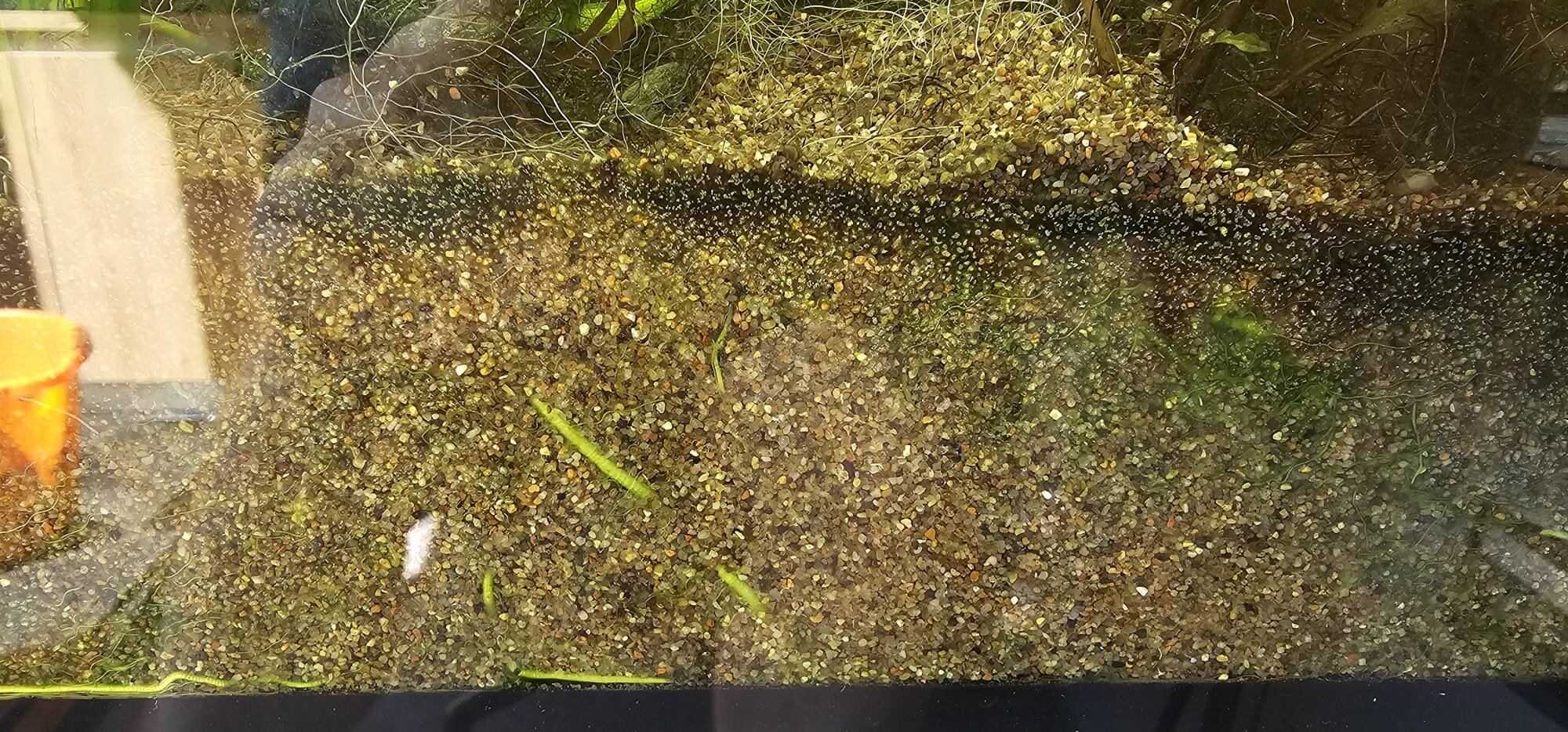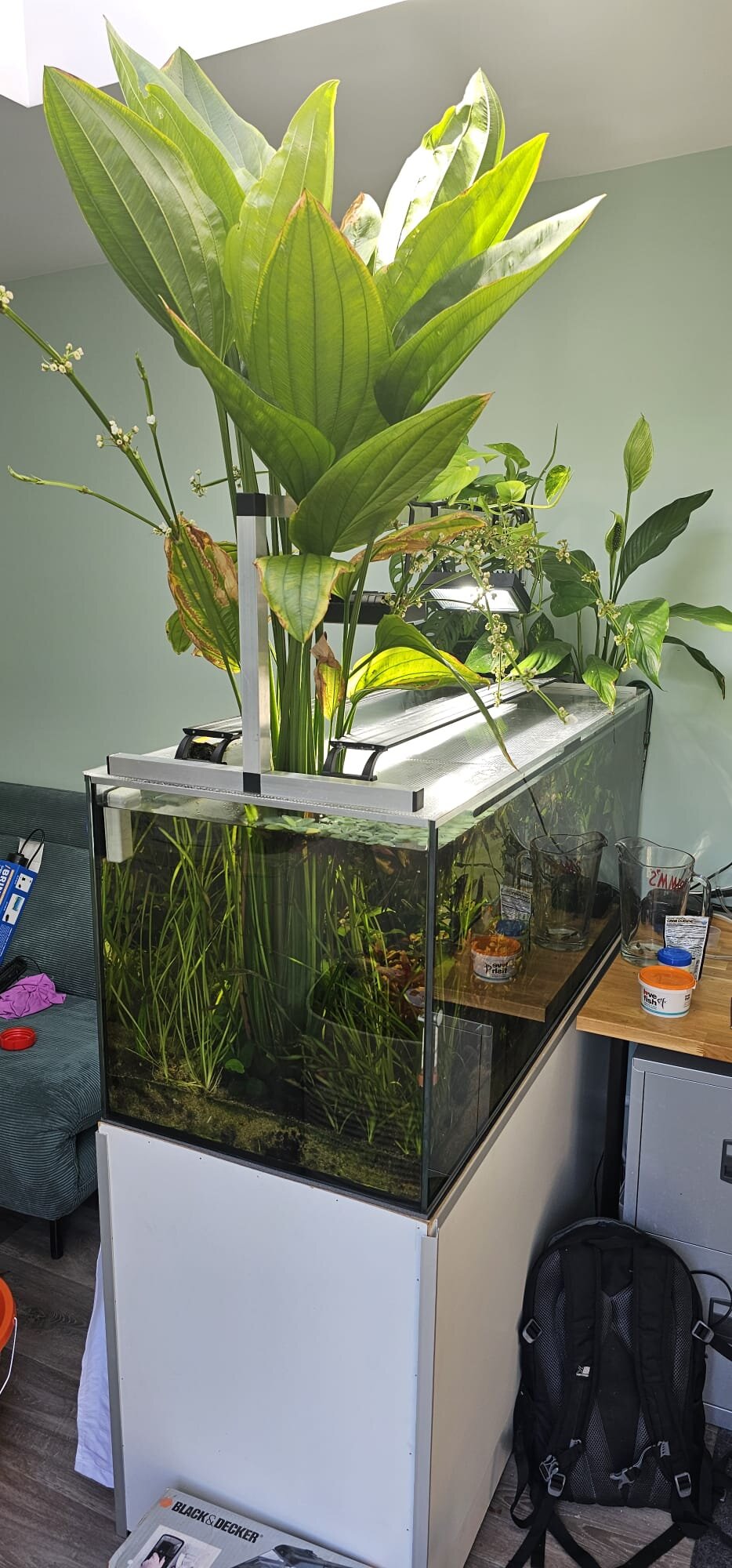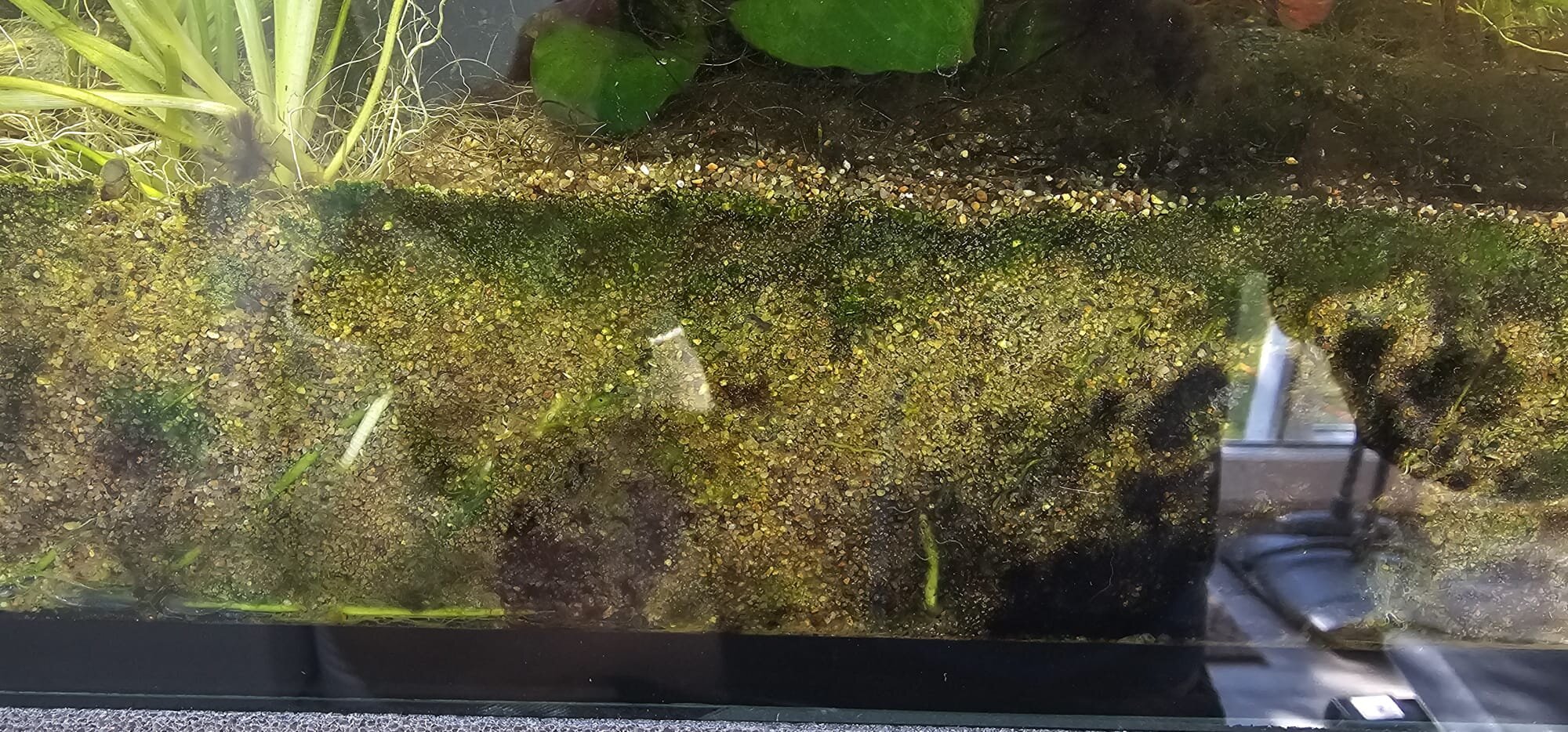So in my 300l tank, I've got an emergent Echinodurus Cordifolius that from base of the tank to top of plant leaves is now 1.5m in height. It's roots have pretty much made a mat of half my substrate (the sand doesn't move and planting into it is hard because of all the routes within it). Substrate is 3" thick.
Along the edges of the glass at the base, I can see it's roots travelling along the edges of the tank.
My question is, given it's got massive (when I set the tank up it was emergent, but about half that size), is there any danger of it 'bursting' out of the tank in the way plants are able to grow into concrete and ultimately bust through it? The seal and tank were all brand new when I got the tank, but is there any risk? Getting it out would be the thing of nightmares. and if I cut it out I assume it would have horrible decay from the roots left behind in the tank substrate.
Thanks for any guidance.
Along the edges of the glass at the base, I can see it's roots travelling along the edges of the tank.
My question is, given it's got massive (when I set the tank up it was emergent, but about half that size), is there any danger of it 'bursting' out of the tank in the way plants are able to grow into concrete and ultimately bust through it? The seal and tank were all brand new when I got the tank, but is there any risk? Getting it out would be the thing of nightmares. and if I cut it out I assume it would have horrible decay from the roots left behind in the tank substrate.
Thanks for any guidance.





